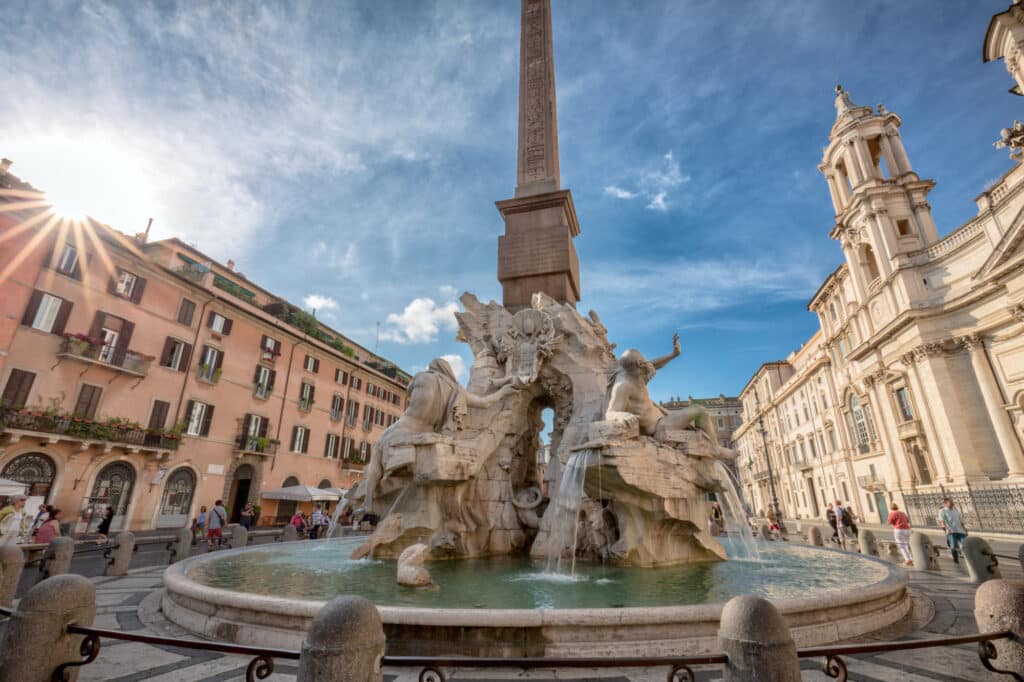
Piazza Navona is a public square and is open 24/7, free of charge. Many guided tours cover Piazza Navona and its surroundings, offering visitors an in-depth understanding of the area’s history and architecture. Some tours even include access to the underground ruins of the Stadium of Domitian.
Steeped in history and adorned with baroque masterpieces, this picturesque piazza has been captivating locals and tourists for centuries. In this comprehensive guide, we’ll explore the myriad of stories and secrets that surround this timeless gem, taking you on a captivating journey through Rome’s history, art, and culture.
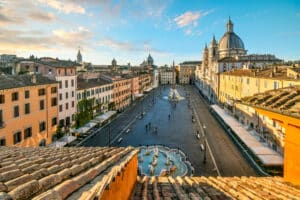
Piazza Navona, Rome, Italy
The Alluring Origins of Piazza Navona
The Birth of a Piazza
Piazza Navona traces its roots back to ancient Rome, where it began as the Stadium of Domitian in 86 AD. Initially built to host athletic competitions, the stadium eventually fell into disrepair and was repurposed as a public square in the 15th century. Today, the original stadium’s footprint remains evident in the piazza’s unique oval shape.
A Gathering Place for All
Throughout history, Piazza Navona has served as a vibrant gathering place for both the elite and the commoners. In the 17th century, Pope Innocent X transformed the square into a symbol of baroque Rome by commissioning the construction of several palaces and fountains. The piazza’s magnetic charm continues to draw visitors from around the world, making it a bustling hub of activity.
The Architectural Marvels of Piazza Navona
The Fountain of Four Rivers: Standing proudly at the center of Piazza Navona is the Fountain of Four Rivers, a stunning baroque masterpiece designed by renowned sculptor and architect Gian Lorenzo Bernini. Completed in 1651, the fountain features an obelisk surrounded by four allegorical figures representing the world’s major rivers: the Nile, the Ganges, the Danube, and the Rio de la Plata.
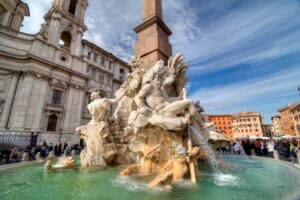
Fountain of Four Rivers
Church of Sant’Agnese in Agone: On the western side of the square, the Church of Sant’Agnese in Agone stands as a testament to the grandeur of baroque architecture. Designed by prominent architects Francesco Borromini and Girolamo Rainaldi, the church is dedicated to Saint Agnes, a Christian martyr who was said to have been exposed in the ancient stadium before meeting her fate.
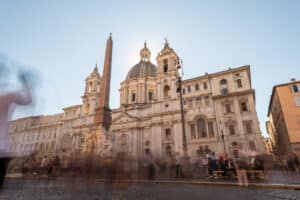
Church of Sant’Agnese in Agone
Palazzo Pamphilj: Overlooking the piazza, the majestic Palazzo Pamphilj houses the Brazilian Embassy and a stunning art gallery. This palace, completed in 1650, showcases an impressive frescoed ceiling by Pietro da Cortona, depicting the glorification of the Pamphilj family.
Hidden Gems and Lesser-Known Facts
The Ancient Roman Remains: Beneath the cobblestones of Piazza Navona lies a treasure trove of ancient Roman ruins. Remnants of the Stadium of Domitian can be found beneath the square and are accessible through guided tours. This hidden world provides a unique glimpse into Rome’s ancient past.
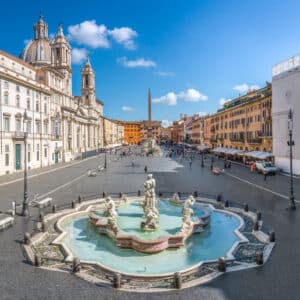
Piazza Navona, Rome, Italy
Noonday Cannon: Every day at noon, a small cannon fires from the Janiculum Hill, marking the exact time for all of Rome to hear. As you stroll through Piazza Navona, you might just catch the faint sound of this daily tradition echoing through the streets.
The Secret of the Fountain of Four Rivers: Rumors have long circulated that Bernini intentionally positioned the allegorical figure representing the Rio de la Plata to shield his eyes from the sight of the Church of Sant’Agnese in Agone, designed by his rival Borromini. However, the truth is that the fountain was completed before the church, making this a mere urban legend.
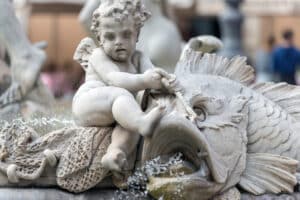
The Christmas Market: Each December, Piazza Navona transforms into a festive wonderland as the annual Christmas market takes over the square. Visitors can shop for traditional Italian holiday treats, unique gifts, and handmade crafts while reveling in the magical atmosphere.
What are the best times to visit Piazza Navona?
Piazza Navona is a popular destination throughout the year, but it’s particularly lively in the late afternoon and evening when street performers, artists, and musicians bring the square to life. The Christmas market, held in December, is also a must-see event for anyone visiting Rome during the holiday season. Piazza Navona is surrounded by a wide variety of restaurants, cafes, and gelato shops, offering everything from traditional Roman cuisine to international fare. It’s an ideal place to enjoy a meal or a coffee while soaking in the vibrant atmosphere.
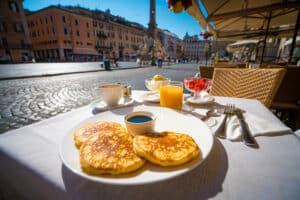
Italian breakfast in Piazza Navona
Piazza Navona is easily accessible by public transportation, including buses and trams. The nearest metro station is Spagna (Line A), from where you can take a 15-minute walk or hop on a bus.

